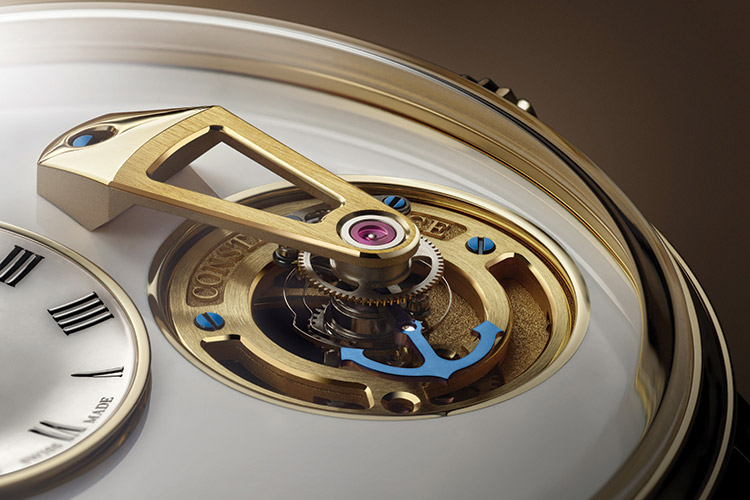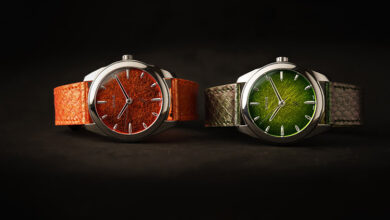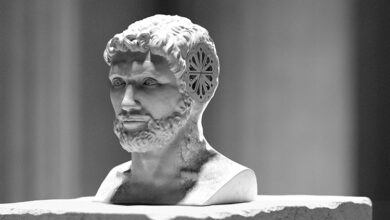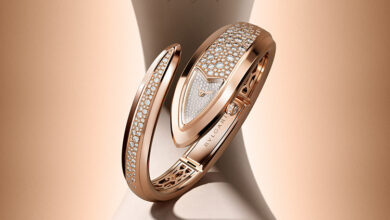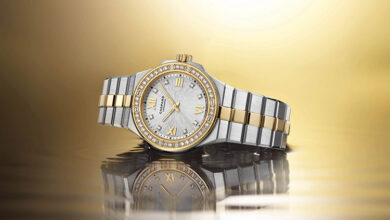A yellow gold Constant Force Tourbillon from Arnold & Son
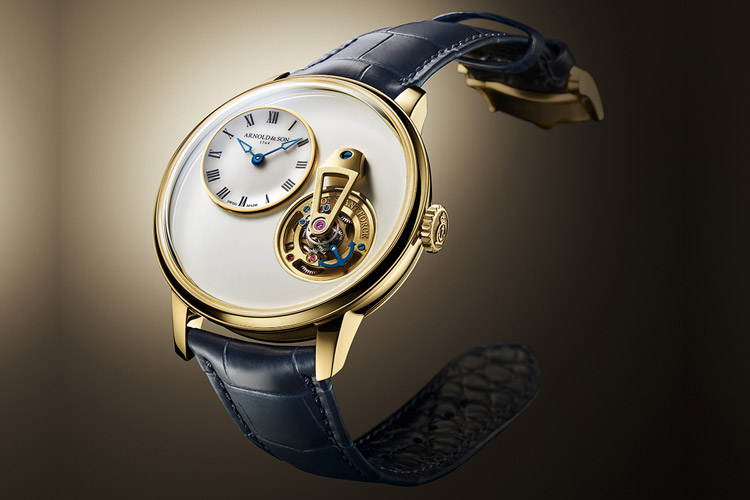
Arnold & Son is a Swiss watchmaking brand with English roots and unites the exacting standards of Swiss watchmaking with a unique aesthetic. As a renowned watchmaker, John Arnold produced some of the most accurate marine chronometers of the 18th century. He won several awards from the Bureau des Longitudes, spurring him on in his research into timekeeping. One of his least known but most significant contributions was the modern definition of the term ‘chronometer’, which today refers to a high-precision timepiece driven by a movement that has passed an accuracy inspection carried out by an official neutral body.
Arnold & Son has based its identity on its ability to produce great watchmaking complications linked to John Arnold’s heritage and based on three principles: Astronomy, Chronometry, and World Time. These complications include tourbillon, true seconds, dual time zones, and moon phase. Lastly, the long-lasting power reserves pay homage to Arnold’s marine chronometers, which also benefit from impressive autonomy. Arnold & Son’s twenty or so calibres have been conceived, designed, developed, machined, decorated, assembled, and adjusted by its sister Manufacture, La Joux-Perret
Constant Force Tourbillon 11, yellow gold edition
The 41.5 mm diameter Constant Force Tourbillon 11 watch in 18-carat yellow gold, released by Arnold & Son as a limited edition of 11, is driven by a hand-wound mechanical movement. Equipped with two barrels to give a 100-hour power reserve, this timepiece was entirely developed and built at the manufacture in La Chaux-de-Fonds. It is fitted with a constant force mechanism visible on the enamel dial and is regulated by a tourbillon that can be seen on the back. The architecture of this calibre is inspired by that of the timekeeping instrument driven by the first tourbillon created by Abraham-Louis Breguet in 1808, based on a chronometer movement designed by John Arnold.
Arnold & Son has chosen to give this Constant Force Tourbillon 11 watch a 41.5 mm diameter 18-carat yellow gold case with a classic design. The yellow hue of this precious metal, chosen because it was often used by John Arnold for his prestigious pocket watches, is in perfect harmony with the openworked bridge of the constant force mechanism, which is also made of 18-carat yellow gold. The front features a thin bezel set with a slightly domed sapphire crystal with an anti-reflective coating on both sides. On the reverse, it has an open case back in yellow gold with an identical sapphire crystal, revealing the manual winding manufacture calibre with the reference A&S5219. Water-resistant up to a pressure of 3 bar (30 metres or 100 feet), the watch is worn on an alligator leather strap fastened around the wrist with a classic pin buckle in 18-carat yellow gold bearing the Arnold & Son monogram.
For the Constant Force Tourbillon 11 timepiece, Arnold & Son chose a white Grand Feu enamel dial to recall the dials of the ship’s chronometers that John Arnold offered to English naval officers in his London boutique. This disc was individually produced by a specialist artisan on an 18-carat yellow gold base. The bespoke A&S5219 movement, specially developed by the Manufacture’s engineers and watchmakers, is hand-wound. It is equipped with two identical barrels mounted in series, giving a 100-hour power reserve. These barrels alternate in driving the mechanism, the second being activated when the torque of the first falls below optimum output.
To guarantee the isochronism of the regulating group over 100 hours of operation, the movement’s designers incorporated a patented constant force mechanism between the going train and the tourbillon. Visible on the dial side, its purpose is to smooth out the energy delivered by the barrels so as to prevent excessive or insufficient torque from affecting the oscillations of the balance in the tourbillon carriage. This constant force mechanism is held in place by an 18-carat yellow gold bridge and rotates over the course of one minute. In the Constant Force Tourbillon 11, it replaces the fusee-and-chain configuration used by John Arnold in his chronometers. As well as supplying a constant force, the system chosen for this timepiece also allows for a ‘dead-beat seconds’ indication, in which the direct-drive hand does not advance seamlessly but instead makes successive jumps of exactly one second – much like the direct-drive seconds of marine chronometers, which also made very similar jumps (detent chronometers generally beat every half-second). In the configuration chosen for the Constant Force Tourbillon 11 watch, the seconds are not indicated by a conventional hand, but instead by the tip of a flame-blued anchor used as a structural bridge for the constant force mechanism.

